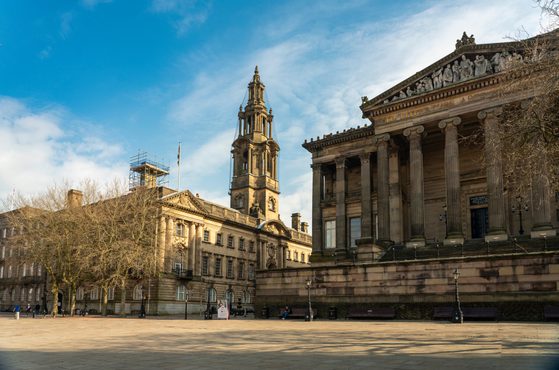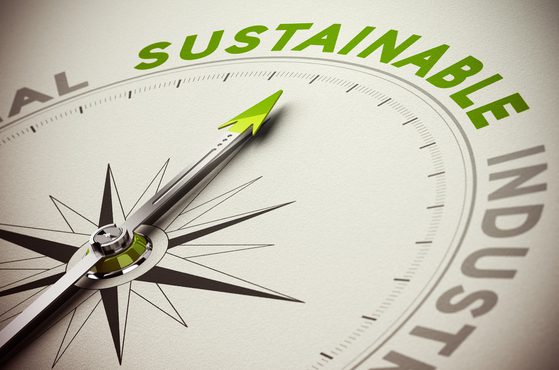Unlocking Lancashire’s potential — navigating talent, investment & identity

We explore the challenges and opportunities facing Lancashire businesses and the solutions they’re building together.
Read more
We make the difference. Talk to us: 0333 004 4488 | hello@brabners.com
AuthorsEdwina Hewson
9 min read

Placemaking and planning can't be successful unless it’s inclusive of all parties that use these spaces.
As we celebrate International Women’s Day and its theme — ‘Inspire Inclusion’ — here, commercial property lawyer and co-chair of our True North advisory council working group on purpose and social impact Edwina Hewson, explores the idea of inclusive placemaking — looking at best practice, the great work taking place in the North and how we can build on this moving forward each and every day.
In Husby — a district of Stockholm, Sweden — local women started an initiative that would go on to create positive change for residents. They saw public spaces in their hometown as unsafe and dominated by men and a local housing company responded by developing a central area from an inclusive perspective. The revitalised public spaces and new measures have been a huge success and included social activities for women, better lighting, easier access to the metro, a playground and a market.
Placemaking and urban planning are also key elements in creating thriving communities across the UK —and the North is no exception.
As we found in our True North: Defining Northern Ambition report, there is a general need for investment and strategic placemaking across the entire region — with both private and public sector engagement required to drive regeneration in our communities. Sourcing investment is the first step, but successful placemaking has many requirements and its imperative to design spaces with the views of women, girls and marginalised groups at the heart of them.
The practice of gendered placemaking is the planning and creation of spaces that respond to the needs of women, non-binary people and underserved groups by involving them in the planning process. Another term often used when referring to this practice is ‘gender mainstreaming’. This is an approach that integrates the perspective of all genders into every stage of a process — from design and implementation, to monitoring and evaluation — all with a view to promoting equality. It emphasises the need for decision-makers to take the security and wellbeing of women into account as standard.
Historically, cities have been designed through the lens of an ableist and male-centric lens. This can be observed in many ways, including narrow pavements, blind corners, alleyways and steep curbs — creating spaces that can feel unsafe or difficult to access for many, not just women. Over a quarter of respondents to a UK Government disability survey in 2021 said that they often had difficulty accessing public buildings and a third had difficulty in accessing public spaces.
For women specifically, safety is a critical issue. A 2022 study for the BBC with YouGov found that 66% of women said that they did not feel safe walking alone at night, at least some of the time. That compared to 39% of men who said that they felt unsafe in the same situation. Stats like these can be a catalyst for us to rethink how we design public spaces — but it’s not where the story ends.
Gender inclusive placemaking also includes urban planning. In Sweden, researchers found that the tendency to clear roads before pavements in the morning benefited men as they were more likely to be car users. It discovered that 69% of pedestrian injuries in winter were experienced by women. By clearing paths first, they reduced accidents by half and saved the local government money.
Elements such as representation can also make a big difference. Only 2-3% of statues in parks and public spaces globally represent women according to the UN. Just this week, Denmark’s culture minister highlighted that Copenhagen has “more statues of mythical beasts and horses” than it does of women. Of the capital’s 101 statues, 70 are of men, 26 of animals and just five are of women.
Austria’s capital city, Vienna, is recognised as a leader in gender mainstreaming. One of its largest urban developments, Aspern, has named its streets after prominent women — Janis Joplin Promenade and Ada Lovelace Strasse, for example. This is an empowering message to women and girls and an invitation for them to occupy those spaces.
Urban planners must reflect the perspectives of every person in the communities that they’re designing for, in order to ensure that cities are safe and accessible to all. However a London School of Economics (LSE) study from 2022 found that women still only made up 14% of the built environment workforce. As we start to regenerate and refresh our community spaces, we have a responsibility to build diverse teams and an opportunity to build spaces that are more inclusive and informed by a broader range of experiences.
Founded in Manchester in 1983, planning consultancy Turley has become a thought leader when it comes to inclusivity in placemaking. It has created a ‘Gender Mainstreaming Working Group’, which has been active since 2021 with the objective of developing tools and solutions to address the issues of non-inclusive placemaking. “At Turley, we were inspired to start our Gender Mainstreaming Working Group by the awful murder of Sarah Everard,” explains Lindsay Hart, Market Research Analyst at Turley. “It struck me that we work within the built environment and we’re in a strong position to do something and make the public realm safer for women, girls and marginalised groups.”
Turley was also one of 18 organisations to co-sign an open letter to the Government’s Department of Levelling up, Housing and Communities, exploring what it described as “deep-rooted” gender bias in the planning system. The letter called for the Government to focus on “designing and delivering public spaces that are fun and judgement-free” for women and girls specifically and that policymakers take account of “women’s interests and concerns to create a more equitable landscape.” It’s hoped that this call for change will be reflected in the Government's updated National Planning Policy Framework expected this autumn.
In 2022, the University of Liverpool joined forces with Arup and the United Nations Development Programme to publish Cities Alive: Designing Cities that Work for Women — a report drawing on the voices and experiences of women globally, as well as data and research, to identify issues and recommendations for more inclusive planning encompassing safety, justice, health and enrichment.
In 2022, Manchester City Council launched the Women’s Nighttime Safety Charter, encouraging a range of businesses to sign up to a list of commitments — including the requirement to include safety in any future city and community planning. The charter has had 350 businesses sign up and as well as encouraging gender inclusive planning, it has seen welfare, vulnerability and active bystander training delivered to 600 people who work in the nighttime economy in Manchester.
Planning processes need to involve consultations with all groups that are expected to use public spaces. Understanding the challenges that underrepresented groups have with the status quo will inform the decisions that are made and result in places that are safe and accessible for all.
One of the key ways to ensure that all genders are included in planning and the built environment is to increase representation in the teams that create and shape cities. As LSE found, women are significantly underrepresented within property companies and consultancies that are tasked with the job of placemaking.
There are certain characteristics of inclusive placemaking and many of these promote security. Things like adequate lighting, unobstructed views and community surveillance all play an important role. Consideration of how the space might be used by various groups is also key — are there places to stop and rest? Are children catered for? Statistically, women walk to take public transport more than men — does the built environment support journeys on foot as much as it does by road?
Inclusive spaces are about more than the layout and design of the physical space. They’re also mindful of integrating the kinds of amenities, services and resources that we all need. The likes of healthcare clinics, childcare facilities, supermarkets and schools can come together to enable inclusion. Accessibility for people who don’t drive and those who use buggies or wheelchairs is crucial.
In many cases, the creation of a set of guidelines or considerations for placemaking can generate progress. As already mentioned, Vienna has proven itself as a leader in the practice. Its council, or municipality,created a manual for gender mainstreaming in urban planning containing prompts and objectives as well as case studies. Placing this alongside the city’s development plan cements awareness. There are many other examples of this around the world, such as a gender sensitive toolkit from Victoria, Australia.
Networks can be a valuable tool in tackling the lack of diversity in the built environment workforce and to amplify the voices of women and other marginalised voices. A number of these already exist across the country, including BRE Women’s Network, Women in BIM and the London Chapter of Urbanists.
Despite cities such as Vienna having embraced gender mainstreaming in placemaking for many years, the concept is still rather new to many.
The important thing is to ensure that gender and marginalised groups form part of the processes.
“We’re still at the point of raising awareness of what [gendered placemaking] is,” explains Sarah Morgan, Associate Director of Urban Design at Turley. “We need to give it the platform that it deserves and get it up the agenda, while managing the many competing priority areas in the built environment — ensuring that women’s voices are heard.”
We can all play our part in raising awareness of inclusive and gender considerate placemaking — not simply on International Women’s Day, but every day.
Our True North network was created to bring together purpose-led organisations on big topics like this. If we work together to share best practices, insights and data then businesses and local authorities can embed this thinking into their processes.
As we see increasing investment in placemaking, our public spaces and everyone who uses them can flourish.

We explore the challenges and opportunities facing Lancashire businesses and the solutions they’re building together.
Read more

We share key insights from the recent True North digital roundtable where we spoke with Ken Clark, the Bank of England’s Agent for the North West.
Read more

Some tech businesses are exploring how their commercial frameworks could evolve through smarter, values-driven contracting.
Read more